UNDERSTANDING OUR STYLE OF MARTIAL ARTS
Founded on the Bruce Lee Principle
NSA is founded on the principles of Bruce Lee’s original art, Jun Fan Gung Fu, which is based on the belief that all martial art systems, though different, contain valuable information that enhances one’s skills and provides a basis of respect for other Martial Arts. We believe in the realistic and practical concept of: “Use all ways and reject none”.
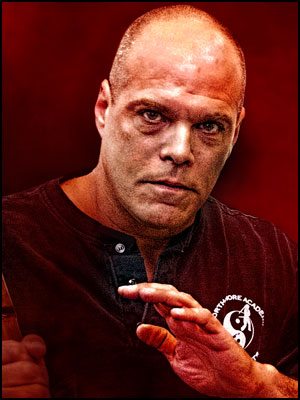
Jeet Kune Do
Jeet Kune Do (截拳道; also “Jeet Kun Do“, “JKD,” or “Jeet Kuen Do“) is a hybrid martial arts system and life philosophy founded in 1967 by martial artist Bruce Lee with direct, non classical and straightforward movements. The style emphasizes minimal movement with maximum effect and extreme speed. The system works on the use of different ‘tools’ for different situations. These situations are broken down into ranges (kicking, punching, trapping and grappling) with techniques flowing smoothly between ranges. It is referred to as a “style without style” or “the art of fighting without fighting” as said by Bruce Lee himself. Unlike more traditional martial arts, Jeet Kune Do is not fixed or patterned and is a philosophy with guiding thoughts. It was named for the concept of interception, or attacking your opponent while he is about to attack. However, the name Jeet Kune Do was often said by Bruce Lee to be just a name. He himself often referred to it as “the art of expressing the human body” in his writings and in interviews. Through his studies Bruce came to believe that styles had become too rigid and unrealistic. He called martial art competitions of the day “dry land swimming”. He believed that combat was spontaneous and that a martial artist cannot predict it, only react to it, and that a good martial artist should “be like water,” moving fluidly without hesitation.
In 2004, the Bruce Lee Foundation decided to use the name Jun Fan Jeet Kune Do (振藩截拳道) to refer to the martial arts system that Lee founded. “Jun Fan” was Lee’s Chinese given name.

Filipino Kali | Eskrima | Arnis
Kali (In the West), Eskrima, and Arnis are umbrella terms for the traditional martial arts of the Philippines that emphasize weapon based fighting with sticks, knives and other bladed weapons, firearms, and various improvised weapons. It also includes hand-to-hand combat and weapon disarming techniques.
Kali students start their instruction by learning to fight with weapons and only advance to empty-hand training once the stick and knife techniques have been sufficiently mastered. This is in contrast to most other well-known Asian martial arts but it is justified by the principle that bare-handed moves are acquired naturally through the same exercises as the weapon techniques, making muscle memory an important aspect of the teaching. It is also based on the obvious fact that an armed person who is trained has the advantage over a trained unarmed person and serves to condition students to fight against armed assailants. Most systems of Kali apply a single set of techniques for the stick, knife, and empty hands, a concept sometimes referred to as motion grouping. Since the weapon is seen as simply an extension of the body, the same angles and footwork are used either with or without a weapon. The reason for this is probably historical, because tribal warriors went into battle armed and only resorted to bare-handed fighting after losing their weapons.
Many systems begin training with two weapons, either a pair of sticks or a stick and a wooden knife. These styles emphasize keeping both hands full and never moving them in the same direction, which trains practitioners to become ambidextrous. For example, one stick may strike the head while the other hits the arm. Such training develops the ability to use both limbs independently, a skill which is valuable even when working with one weapon.
A core concept and distinct feature of Filipino martial arts is the Live Hand. Even when a practitioner wields only one weapon, the extra hand is used to control, trap or disarm an opponent’s weapon and to aid in blocking, joint locking, and manipulation of the opponent or other simultaneous motions such as biceps destruction with the live hand.
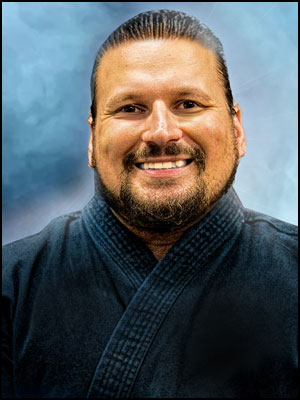
Brazilian Jiu-Jitsu
Brazilian Jiu-Jitsu (BJJ) emphasizes getting an opponent to the ground in order to utilize ground fighting techniques and submission holds involving joint-locks and chokeholds. The premise is that most of the advantage of a larger, stronger opponent comes from superior reach and more powerful strikes, both of which are somewhat negated when grappling on the ground. A more precise way of describing this would be to say that on the ground, physical strength can be offset or enhanced by an experienced grappler who knows how to maximize force using mechanical strength instead of pure physical strength.
BJJ permits a wide variety of techniques to take the fight to the ground after taking a grip. While other combat sports such as Judo and wrestling almost always use a takedown to bring an opponent to the ground, in BJJ one option is to “pull guard.” This entails obtaining some grip on the opponent and then bringing the fight or match onto the mat by sitting straight down or by jumping and wrapping the legs around the opponent.
Once the opponent is on the ground, a number of maneuvers (and counter-maneuvers) are available to manipulate the opponent into a suitable position for the application of a submission technique. Achieving a dominant position on the ground is one of the hallmarks of the BJJ style and includes effective use of the guard (a signature position of BJJ) to defend oneself from the bottom (using both submissions and sweeps, with sweeps leading to the possibility of dominant position or an opportunity to pass the guard), and passing the guard to dominate from top position with side control, mount, and back mount positions. This system of maneuvering and manipulation can be likened to a form of kinetic chess when utilized by two experienced practitioners. A submission hold is the equivalent of checkmate in the sport, reflecting a disadvantage which would be extremely difficult to overcome in a fight (such as a dislocated joint or unconsciousness).
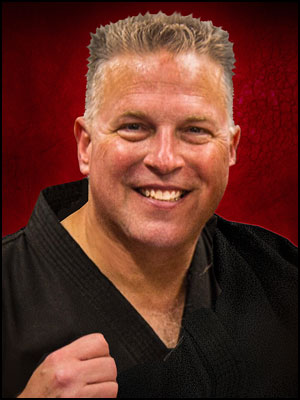
Panantukan Silat Combatives
Panantukan is the Filipino art of boxing. Sometimes referred to as dirty boxing, Panantukan utilizes all parts of the body, hands, forearms, shoulders, hips, knees to attack an opponent. In the 1800’s, boxers like John Sullivan were boxing with arms extended and wide stances… when the Americans went over to the Philippines, they witnessed a whole new way of boxing… which came from knife fighting – You cannot stand with arms extended with a knife; everything was close in, small movements, an abundance of footwork and body mechanics.
Silat is from Indonesia and parts of the Philippines. It is a fast, brutal while keeping your opponent off balance for devastating take down effects. Guro Marc Halleck has combined the best of these arts and originated a practical system that anyone can learn and add to any current Martial Art or Fighting Style.
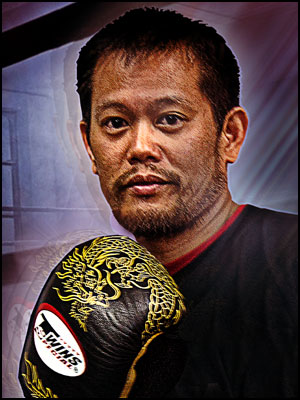
Kapap – Israeli Special Forces
KAPAP (Hebrew: קפא”פ, קפ”פ) is an acronym for Krav Panim el Panim, translated as “face to face combat”, is a close quarter battle system of defensive tactics, hand-to-hand combat and self defense.
The KAPAP system was developed in the late 1930s, within the Jewish Aliyah camps (ma-ḥa-not Olim) as part of preparatory training before their arrival in the British Mandate of Palestine. The Palmach and Haganah used KAPAP as an ongoing combat development program for their recruits.
It was primarily considered a practical skill set that was acquired during the training period of the Palmach and Haganah fighters. The main focus was to upgrade the physical endurance, elevate and strengthen the spirit, developing a defensive and offensive skill set. It included physical training and endurance, cold weapon practical usage, boxing, judo, jujutsu, karate and knife and stick fighting.
In the early 1950s the term KAPAP was used interchangeably with the term Krav Maga as elements of the syllabus altered. By the time the 1960s came, the term was used only within certain units who needed more than basic training in Krav Maga such as Unit 216, Sayeret Matkal (Ariel Sharon also served in this unit). Special units required skill sets that suited their function. Units such as non-military police special units like Yamam require more than striking and neutralization in their skillsets. It should also be noted that not all Special Forces fall under the IDF (Israeli Defense Forces). Modern KAPAP has evolved in units such as these and also at Lotar (Israel’s school of Anti-Terrorism).
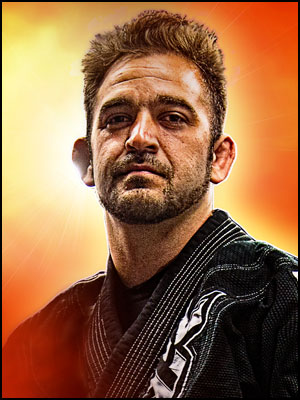
Muay Thai – Kickboxing
Muay Thai, translated into English as Thai Boxing, is the national sport of Thailand and is a martial art with origins in the ancient battlefield tactics of the Siamese (or Thai) army. It evolved from Krabi-Krabong, literally sword and baton, the hand-to-hand tactics of the Thai army. The early Muay Thai bouts pitted different companies within the Siamese army against each other with few rules and no weight divisions or time limits. They became quite popular and eventually were shown in stadiums across the country. In the early 20th century time limits, boxing gloves, and a uniform set of rules were introduced. During the latter half of the 20th century Muay Thai was exported to many countries and is now practiced by hundreds of thousands of people all over the world.
Muay Thai is known as “King of the Ring” in kickboxing circles. These fights feature punches, kicks, elbows, knees, standing grappling, and head-butts to wear down and knock out opponents. Thai training methods develop devastating power, speed, and superb cardiovascular endurance as well as fighting spirit. Muay Thai training is also quite safe thanks to sophisticated pad training that evolved to keep fighters healthy between fights. Muay Thai has also proven very effective outside the ring and has been embraced enthusiastically by practitioners of a variety of self-defense, sporting, military, and law enforcement activities.
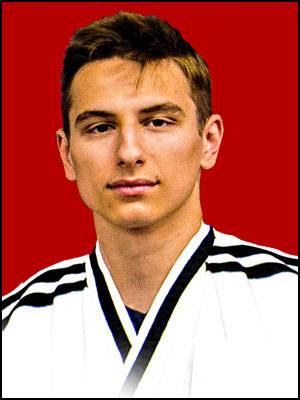
Karate
Instructor – Youth and Children’s Programs
Karate (空手) is a martial art developed in the Ryukyu Islands in what is now Okinawa, Japan. It was developed partially from the indigenous martial arts of Ryukyu Islands called Te (手, literally “hand”; Tii in Okinawan) and from Chinese kenpo.
Karate is a striking art using punching, kicking, knee strikes, elbow strikes and open hand techniques such as knife-hands, spear-hands,and palm-heel strikes. In some styles, grappling, throws, joint locks, restraints, and vital point strikes are also taught. A karate practitioner is called a karateka (空手家).
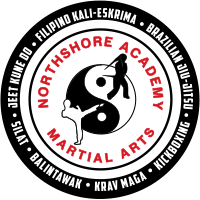
Enjoy a Free Week of Classes!
Thank you for visiting Northshore Academy of Martial Arts in Libertyville, IL.Sign up below and Take advantage of our Free 1 Week Trial Promotion. We look forward to hearing from you!
ACADEMY
- Home
- The NSA Difference
- Our Team
- Facility and Amenities
- Lineage and Accreditation
- Our Style of Martial Arts
YOUTH PROGRAMS
- Kids Martial Arts: Ages 4-6
- Youth Martial Arts: Ages 7+
- Youth Pekiti Tirsia Kali
- Youth Brazilian Jiu Jitsu
- Stick Fighting Olympiads
- Youth Combat Archery
- Private Youth Lessons
STUDENT LOGIN
PARENTS
- A Message to Parents
- What to Expect for your Child
- Youth Leadership Program
- What our Parents have to Say
- Class Schedule
ADULT PROGRAMS
- Jeet Kune Do / Filipino Kali
- Adult Pekiti Tirsia Kali
- Adult Kickboxing / Muay Thai
- Adult Brazilian Jiu Jitsu
- Adult Combat Archery
- Stick Fighting Olympiads
- Krav Maga - Women's Self Defense
- Private Adult Lessons
EVENTS
LOCATION
Northshore Academy of Martial Arts
281 Peterson Road
Libertyville, Illinois 60048
DIRECTIONS
We are Located in the
Peterson Commons
Center next to Lino's
and Catered Productions
Directions: Click Here
CONTACT
Phone: 847-573-1672
Email: Click Here
Facebook: Click Here

Thank you for visiting Northshore Academy of Martial Arts. Take a moment to browse our website and feel free to contact us with any questions you may have... We are here to help.
